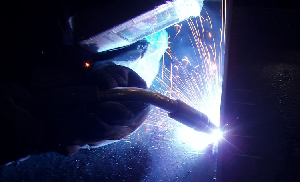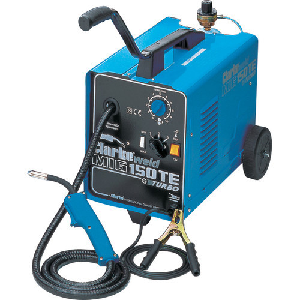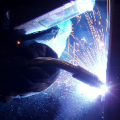 Welding is defined as the joining of two individual pieces of metal together with the use of heat produced by an “arc” (aka: electrical current).
Welding is defined as the joining of two individual pieces of metal together with the use of heat produced by an “arc” (aka: electrical current).
MIG (Metal Inert Gas) welders are continuously fed wire and gas. The inert gas is used as a protective shield, from the area that is being welded, from other gases present.
Gas Metal Arc Welding (GMAW), also known as a type of MIG welding, is an electrical welding process that allows long stretches of metal to be joined continuously.
MIG welding uses electricity to melt and join metal pieces together, and this type of welding is considered to be one of the easiest types to learn.
The 110v MIG welder and the 220v MIG welder differ only by the power they use, and the power they output. 110 MIG welders are portable and convenient because it fits into any U.S. standard 3-prog outlet. 220 volt versions may require custom electrical outlets.
Safety Tips Regarding 100v and 220v MIG Welders
These include head to toe safety gear to avoid serious burns (and potentially other types of injuries). Welding safety gear includes: leather gloves, long sleeves, long pants, boots and a protective hood.
If you do not invest in proper (and quality) safety welding gear, it is possible that you are putting yourself at risk for inhaling toxic gases and experiencing painful flash or UV burns.
In addition to wearing welding safety gear, it is also important to survey the immediate area and remove any items that can potentially catch fire due to a welding spark.
Some advantages of MIG welding include:
- Easy to learn.
- Produces high quality output at a faster rate.
- Weld splatter is minimal.
- Capable of welding in many positions.
- A variety of material can be welded together.
Considerations Regarding the Best MIG Welder For Your Needs
 A couple considerations would be cost, type of material you plan to weld and frequency of use.� Don’t necessarily go for a cheap MIG welder, but concentrate on top quality for the amount of money you are willing to spend on this piece of machinery.
A couple considerations would be cost, type of material you plan to weld and frequency of use.� Don’t necessarily go for a cheap MIG welder, but concentrate on top quality for the amount of money you are willing to spend on this piece of machinery.
A portable MIG welder usually weights under 40 pounds, as it can easily be transported in a mini-van. Larger units can weigh in an excess of 75 pounds. Even with smaller units, it is advised to use a wheeled cart when moving the unit around a warehouse or shop.
The basic components of a MIG welder include:
- Control switch
- Wire feed
- Power source
- Gun/welding torch
- Wire source/electrode
Also, a MIG rod oven is available for safely storing electrodes.
It is important to note that if you are planning to weld aluminum that a spool gun attachment is necessary to avoid aluminum electrode wires clogging up the wire feeder. A spool gun feeds the aluminum wire directly into the torch to provide you with a smooth/uninterrupted welding experience.
The duty cycle refers to how many minutes the MIG welder can run within a ten minute period without needing to “rest”. For example, a duty cycle may be 20% when run at 90AMPS, this basically means that the machine will continuously weld for two minutes, and then it needs to rest for eight minutes before the welding process can continue.
In the same manner, at 30% duty cycle means that you will have three minutes of welding time before the machine needs to rest for a seven minute period.
Because welders are major financial investments and require quite a bit of electricity, it is never advised to purchase a cheap MIG welder unless you are sure it is of high quality. Always do your homework and purchase a quality, positively reviewed welder whether buying new or used.
